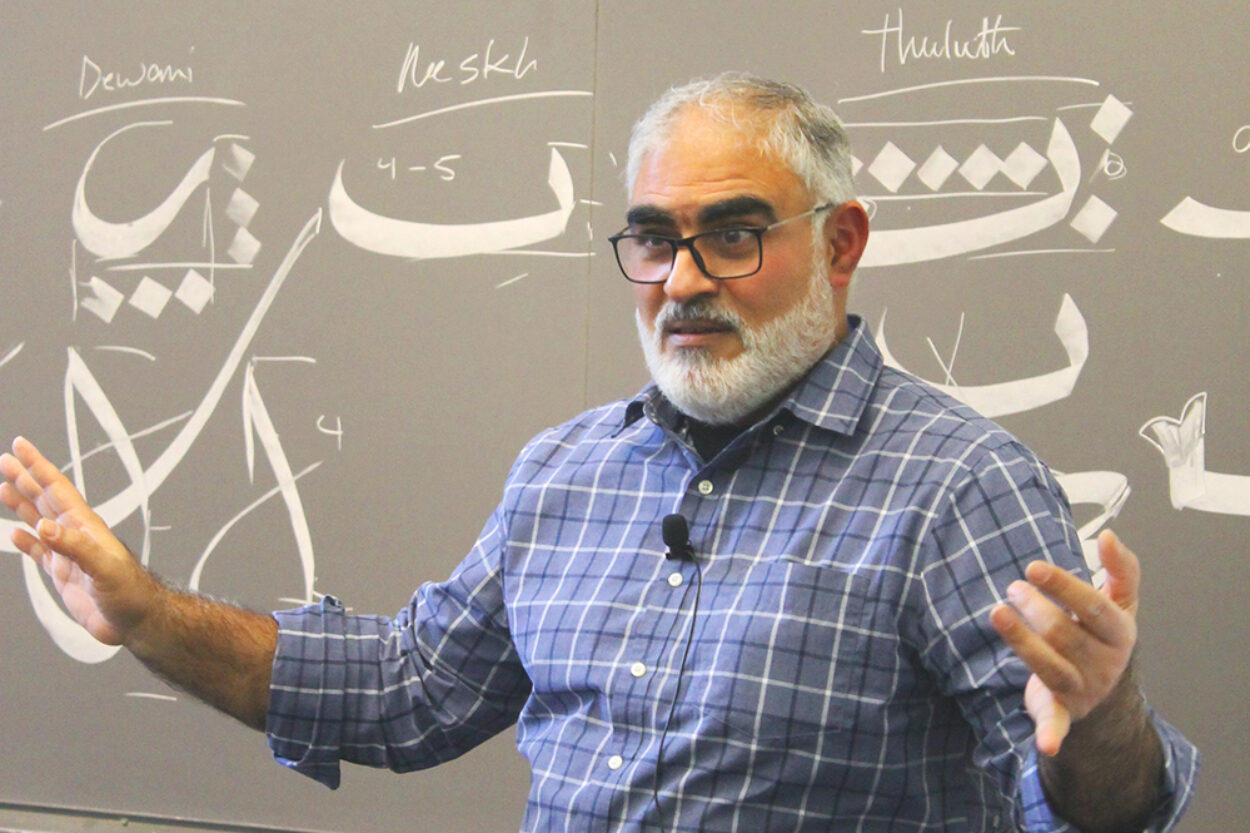A recent MIT event put into focus the ways in which the Institute is celebrating and supporting the education of Arabic language, art, and history.
On Dec. 9, students had the opportunity to learn about the history and art of Arabic calligraphy from a local expert, Hajj Wafaa. A freelance calligrapher, Wafaa has taught Arabic calligraphy in the Boston area since 2004.
Originally from Kufa, Iraq, Wafaa taught himself calligraphy using paper, ink, and tools of his own making when he was a refugee in Rafha, Saudi Arabia, in 1991. His presentation described how Arabic calligraphy developed across time and geography, and he demonstrated the characteristics of the various styles.
He also introduced the audience to the basic implements and materials for calligraphy, describing how refugees used found materials to make pens, ink, and paper. Wafaa showed slides of some of his own creations, and made suggestions for students interested in becoming practitioners. He also explained some of the differences between Arabic and Chinese, Japanese, and Latin calligraphy.
The event was held to celebrate the launch of Arabic language classes at MIT and was cosponsored by MIT Global Languages and MIT-Arab World. Joyce Roberge, undergraduate academic administrator for MIT Global Languages, moderated the event and announced the Institute’s new Arabic language offerings: With support from the School of Humanities, Arts, and Social Sciences and the MIT-Arab World program, MIT Global Languages is launching a pilot of Arabic this month, with a second course in the spring term.
Professor Emma J. Teng, director of MIT Global Languages, noted, “We are very excited to finally be able to offer Arabic. We have had long-term demand from students for Arabic, and until now MIT students have had to enroll at Harvard or Wellesley to study this language for credit.” She explained that the new pilot was made possible with the support of the Arabic Alumni Association.
The language classes will bolster other subject offerings about the Middle East at the Institute. Associate Provost Philip S. Khoury, the Ford International Professor of History and faculty advisor for Middle Eastern studies at MIT, said, “The new Arabic language pilot will help to prepare MIT students to better understand and engage with Arab culture and society.”
Nasser Rabbat, Aga Khan Professor in the Department of Architecture and the Aga Khan Program for Islamic Architecture, added, “Arabic is the national language of 22 countries and the mother tongue of more than 400 million people. It is also the language of the Qur’an, recited in the original language by the world’s 1.5 billion Muslims. Arabic has also been the primary language of literature, science, philosophy, law, and liturgy in the entire Islamic world until the 20th century. It is one of the six official languages of the United Nations today.”
When asked if the global prevalence of computers will destroy the calligraphic tradition, Waafa explained that calligraphy is not a mere tool for communication, but rather a profound practice of culture and tradition that continues to attract students to the discipline and artistic expression.
After his talk, he put pen to paper to write students’ names or chosen words in Arabic calligraphy. A station was also set up with materials for students to try their own hands.
